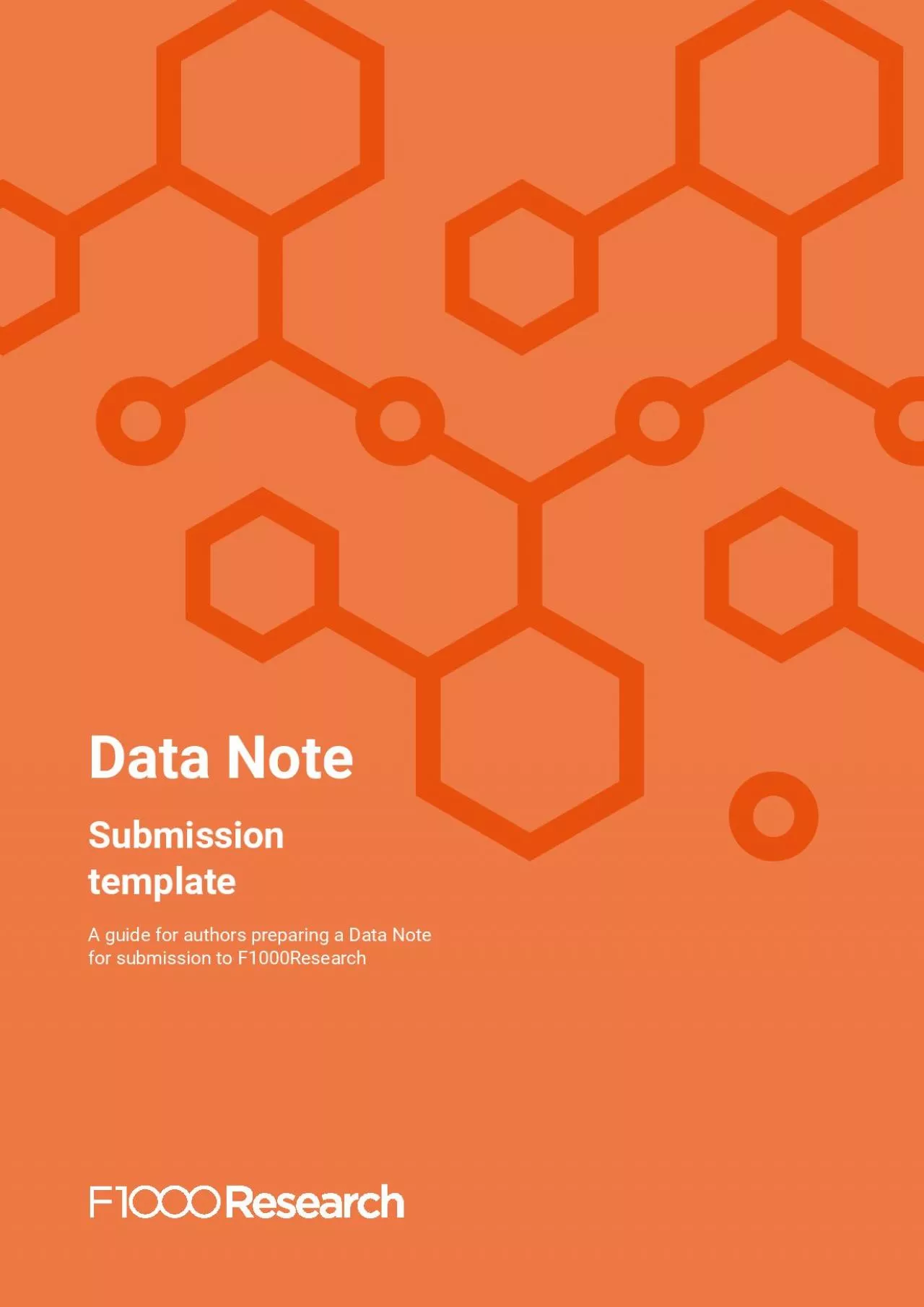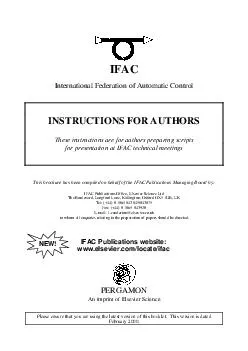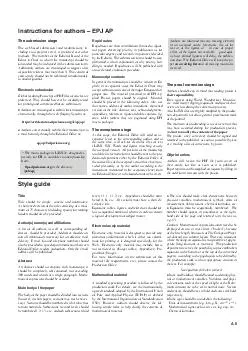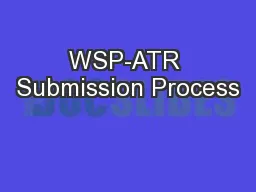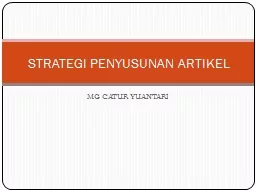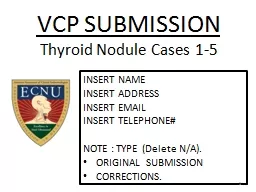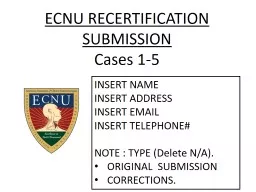PDF-A guide for authors preparing a Data Note for submission to F1000Resea
Author : emily | Published Date : 2021-08-07
2 Authors AbstractMain BodyData availability Extended dataSoftware availability optionalOther required information Grant information Competing interests Registration
Presentation Embed Code
Download Presentation
Download Presentation The PPT/PDF document "A guide for authors preparing a Data Not..." is the property of its rightful owner. Permission is granted to download and print the materials on this website for personal, non-commercial use only, and to display it on your personal computer provided you do not modify the materials and that you retain all copyright notices contained in the materials. By downloading content from our website, you accept the terms of this agreement.
A guide for authors preparing a Data Note for submission to F1000Resea: Transcript
Download Rules Of Document
"A guide for authors preparing a Data Note for submission to F1000Resea"The content belongs to its owner. You may download and print it for personal use, without modification, and keep all copyright notices. By downloading, you agree to these terms.
Related Documents

